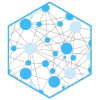Projects
Carbon Capture Simulation Initiative
The CCSI Toolset will accelerate the development and deployment cycle for bringing new Carbon Capture and Storage (CCS) technologies to market. Read More »
Materials Project
The Materials Project is a high-throughput framework developed by MIT and LBNL and subsequently extended by collaborators at the Lawrence Berkeley Laboratory and National Energy Research Scientific Computing (NERSC). This Center, funded by the DOE BES Predictive Theory and Modeling for Materials and Chemical Sciences program, will extend the Materials Project with high-throughput calculations, state-of-the-art electronic structure methods as well as novel data mining algorithms for surface,… Read More »
AmeriFlux
The AmeriFlux Network of PI-managed sites measures ecosystem CO2, water, and energy fluxes in North, Central and South America. It was established to connect research on field sites representing major climate and ecological biomes, including tundra, grasslands, savanna, crops, and conifer, deciduous, and tropical forests.AmeriFlux datasets provide the crucial linkage between organisms, ecosystems, and process-scale studies at climate-relevant scales of landscapes, regions, and continents, which… Read More »
NGEE Tropics
The Next-Generation Ecosystem Experiments–Tropics, or NGEE-Tropics (Website), is a ten-year, multi-institutional project funded by the U.S. Department of Energy (DOE), Office of Science, Office of Biological and Environmental Research (BER). NGEE-Tropics aims to fill the critical gaps in knowledge of tropical forest-climate system interactions. The overarching goal of NGEE-Tropics is to develop a predictive understanding of how tropical forest carbon balance and climate system feedbacks… Read More »
IDAES
The Institute for the Design of Advanced Energy Systems (IDAES) project develops next-generation computational tools for Process Systems Engineering (PSE) of advanced energy systems to enable rapid design and optimization.
Read More »
NAWI
NAWI brings together a world-class team of industry and academic partners to examine the critical technical barriers and research needed to radically lower the cost and energy of desalination. Read More »
CCSI2
The Carbon Capture Simulation for Industry Impact (CCSI2) project is designed to use the computational tools and models developed under the Carbon Capture Simulation Initiative (CCSI) in partnership with industry to accelerate and de-risk the scale-up of new and innovative carbon capture technology. CCSI2 operates in conjunction with and in support of the Department of Energy (DOE) Fossil Energy’s (FE’s) Carbon Capture Program to focus on advancing promising technologies.[image… Read More »
Cybersecurity Research and Development
Lawrence Berkeley National Laboratory (Berkeley Lab) Computing Sciences Research performs extensive research and development in nuclear arms control monitoring and safeguards. In recent years, this work has been funded largely via National Nuclear Security Administration (NNSA) Office of Defense Nuclear Nonproliferation. These projects include collaborations with academic and Nationla Lab partners. Read More »
Cybersecurity for Energy Delivery Systems Research and Development
Berkeley Lab Computing Sciences Research performs extensive R&D in cybersecurity for energy delivery systems. In recent years, this work has been funded largely via DOE’s Cybersecurity Research, Development, and Demonstration for Energy Systems program within the Office of Cybersecurity, Energy Security, and Emergency Response (CESER). These projects include collaborations with academic, vendor, and utility partners. Read More »
Cybersecurity for Research Cyberinfrastructure and High-Performance Computing
Berkeley Lab Computing Sciences Research performs extensive research and development in cybersecurity. Its mission-driven emphasis focuses on security for research cyberinfrastructure, including high-performance computing, high-throughput networking environments, and intrumentation. R&D sponsors have typically included DOE’s ASCR program, and the National Science Foundation (NSF) SaTC program and OAC office, among others.
Read More »


















